Examining The Roots of Environmental Injustice in Minneapolis
This interactive dashboard allows you to explore the legacy of residential segregation, one that has led to stark environmental injustice that tremendously ails Black, Latino, and Native American families in Minneapolis.
A Closer Look
Let’s take a closer look at how residential segregation correlates with the disparity in social vulnerability index*, temperature, and air pollution in different Minneapolis neighborhoods.
**The current CDC/ATSDR Social Vulnerability Index uses 16 U.S. Census variables from the 5-year American Community Survey (ACS) to identify communities that may need support before, during, or after disasters. These variables are grouped into four themes that cover four major areas of social vulnerability and then combined into a single measure of overall social vulnerability.*
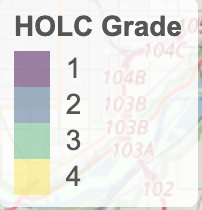




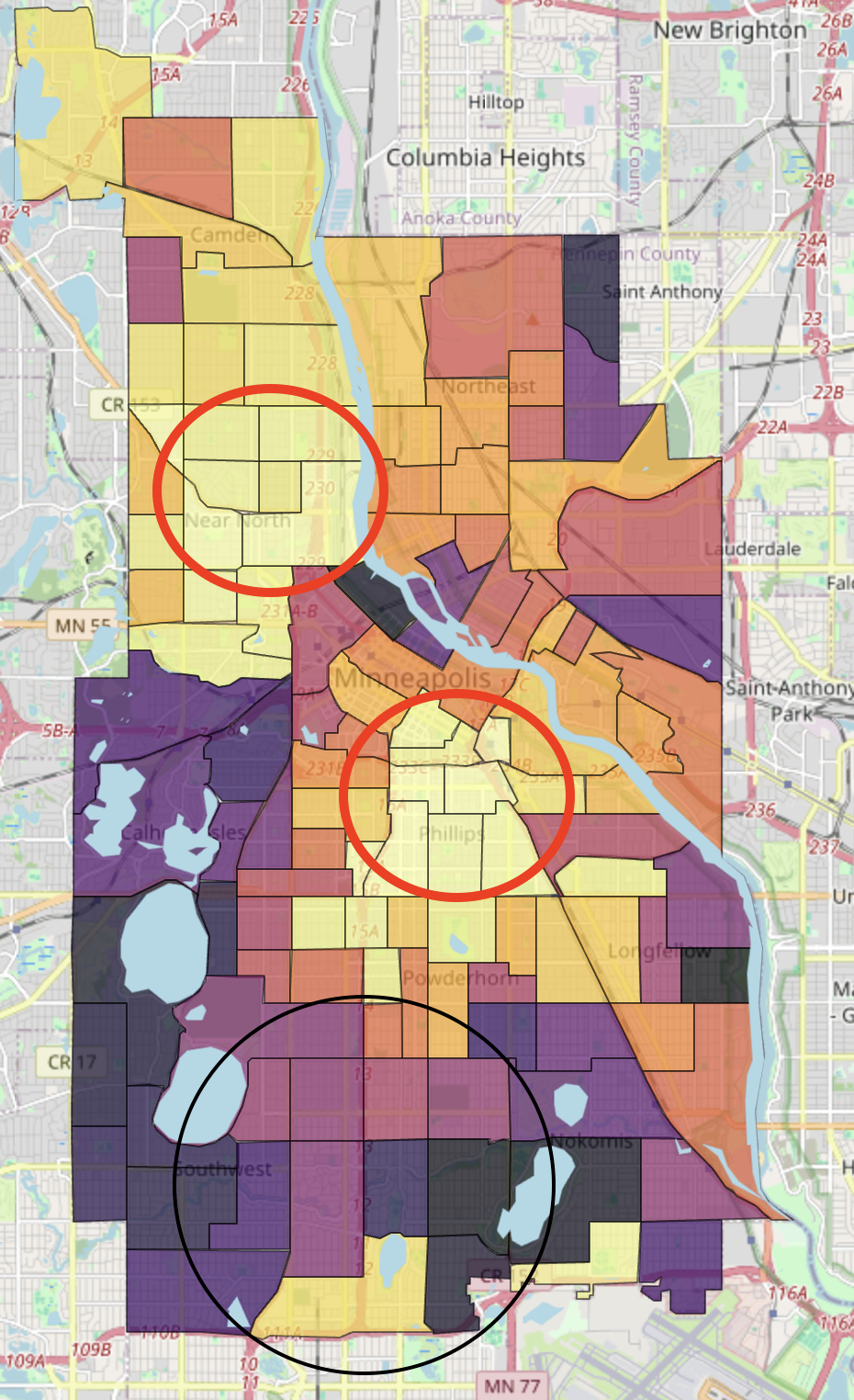
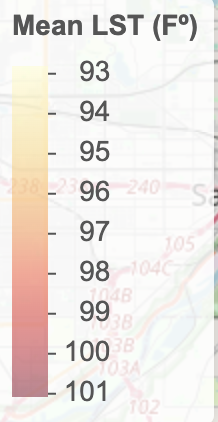

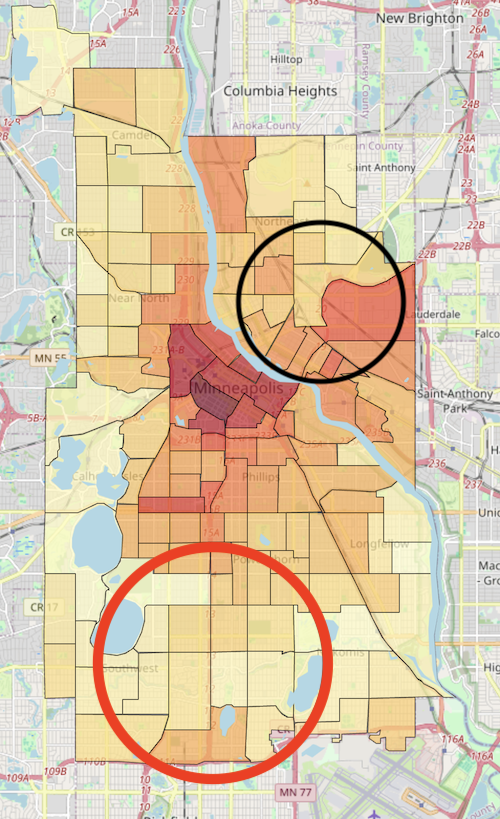
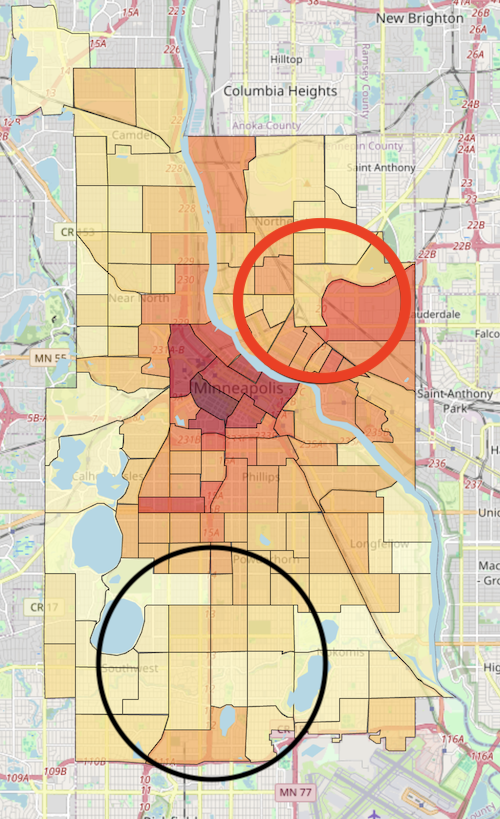
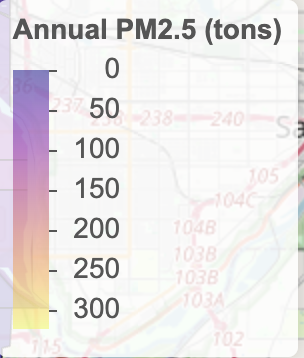
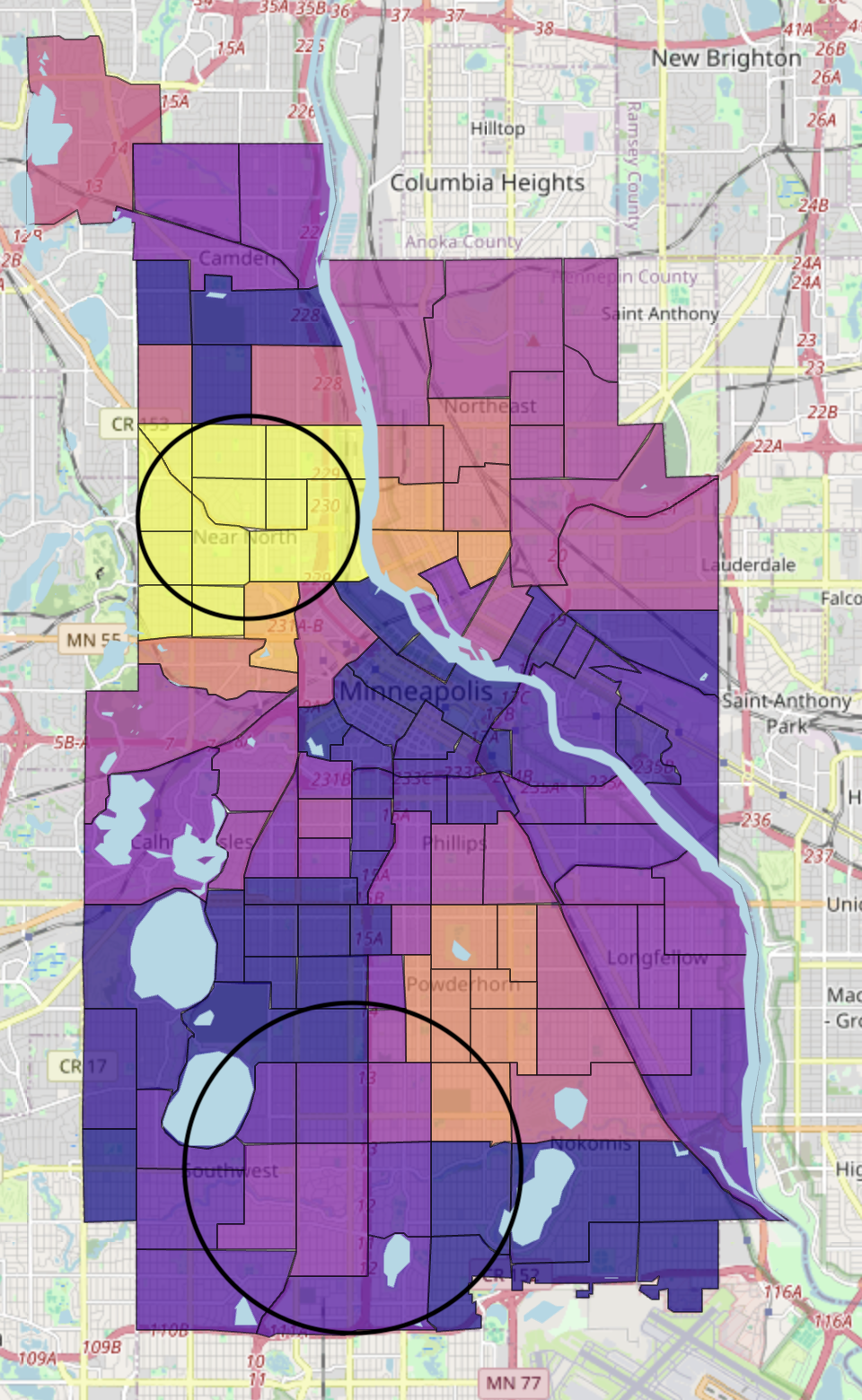
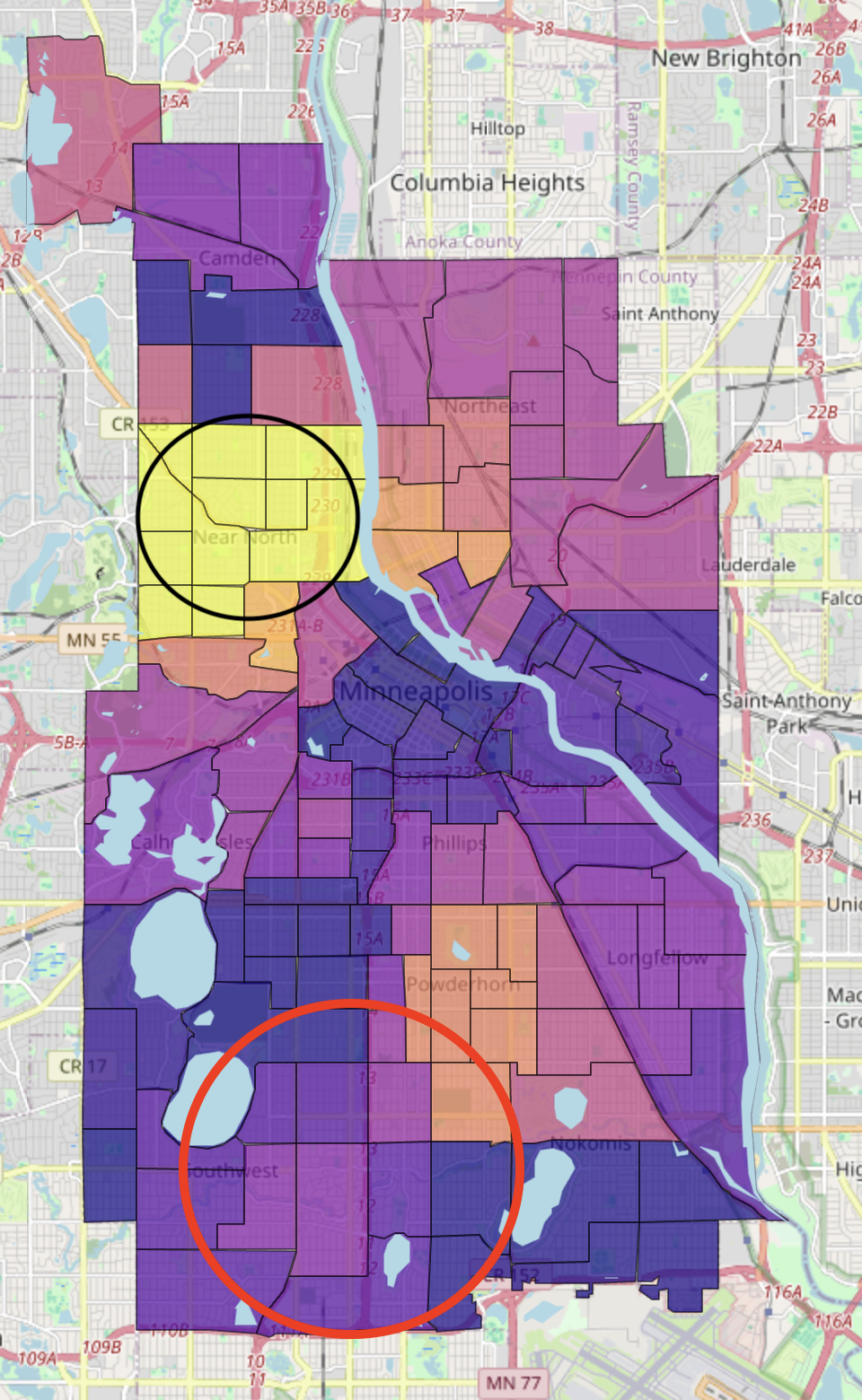
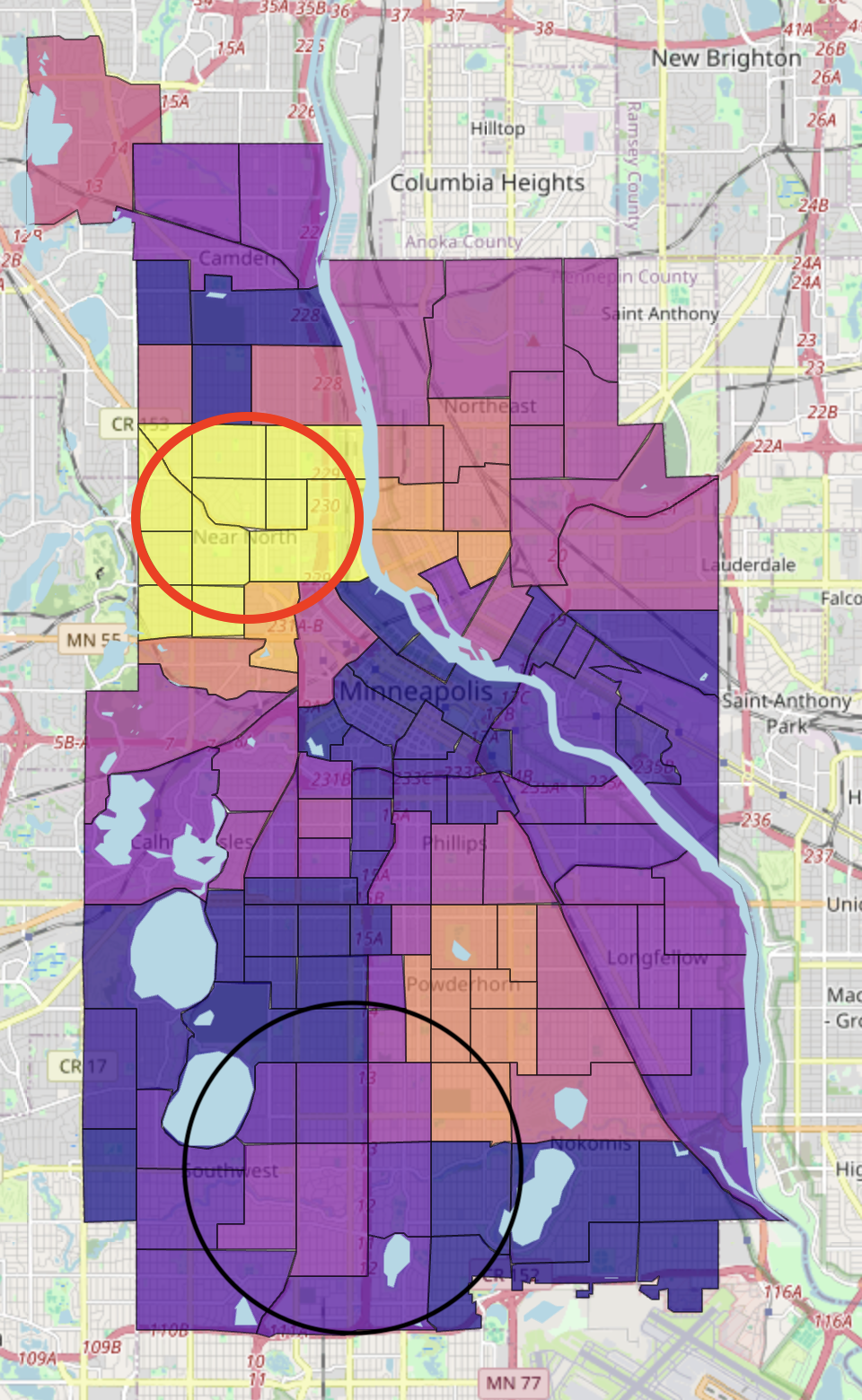
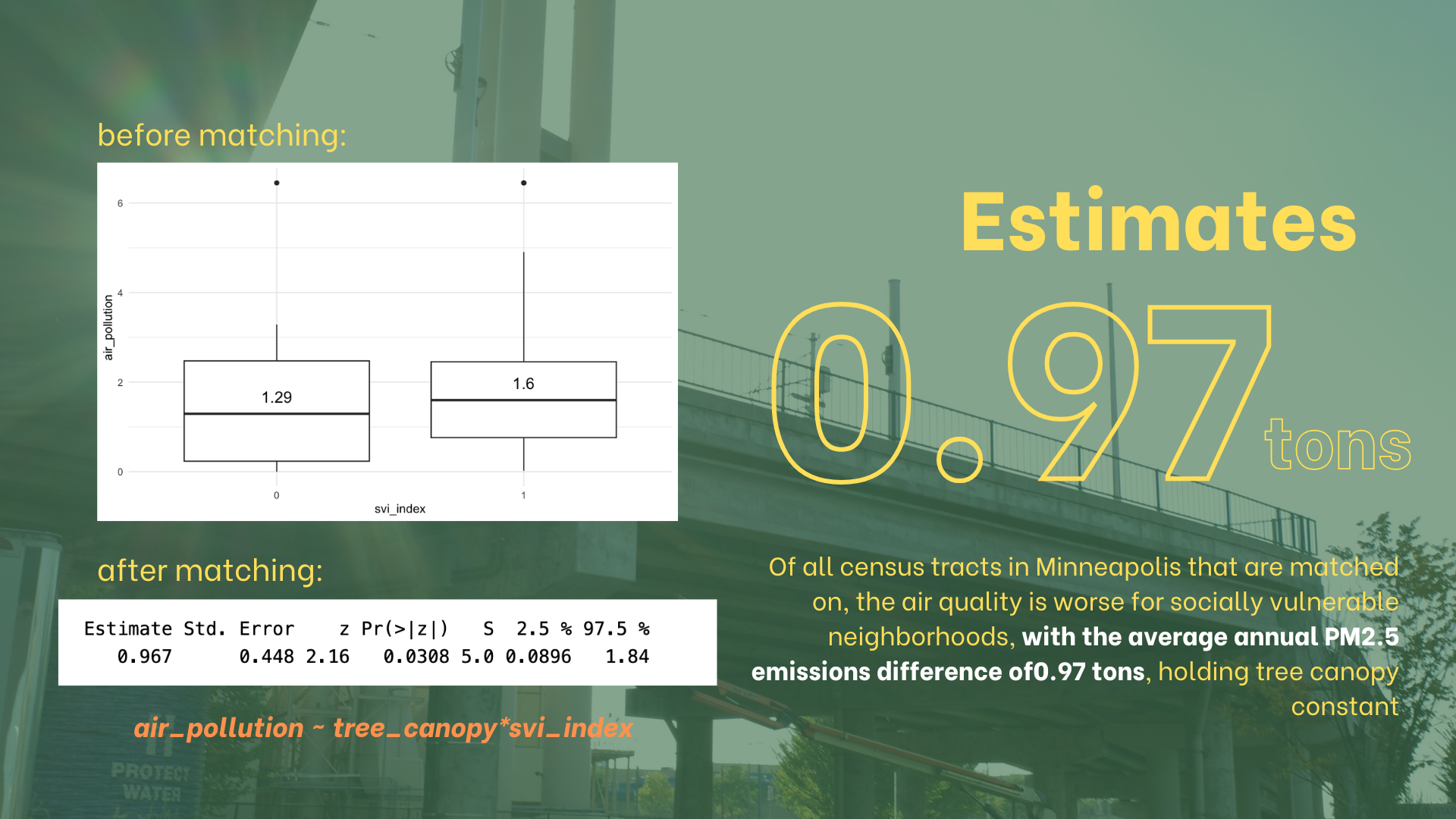
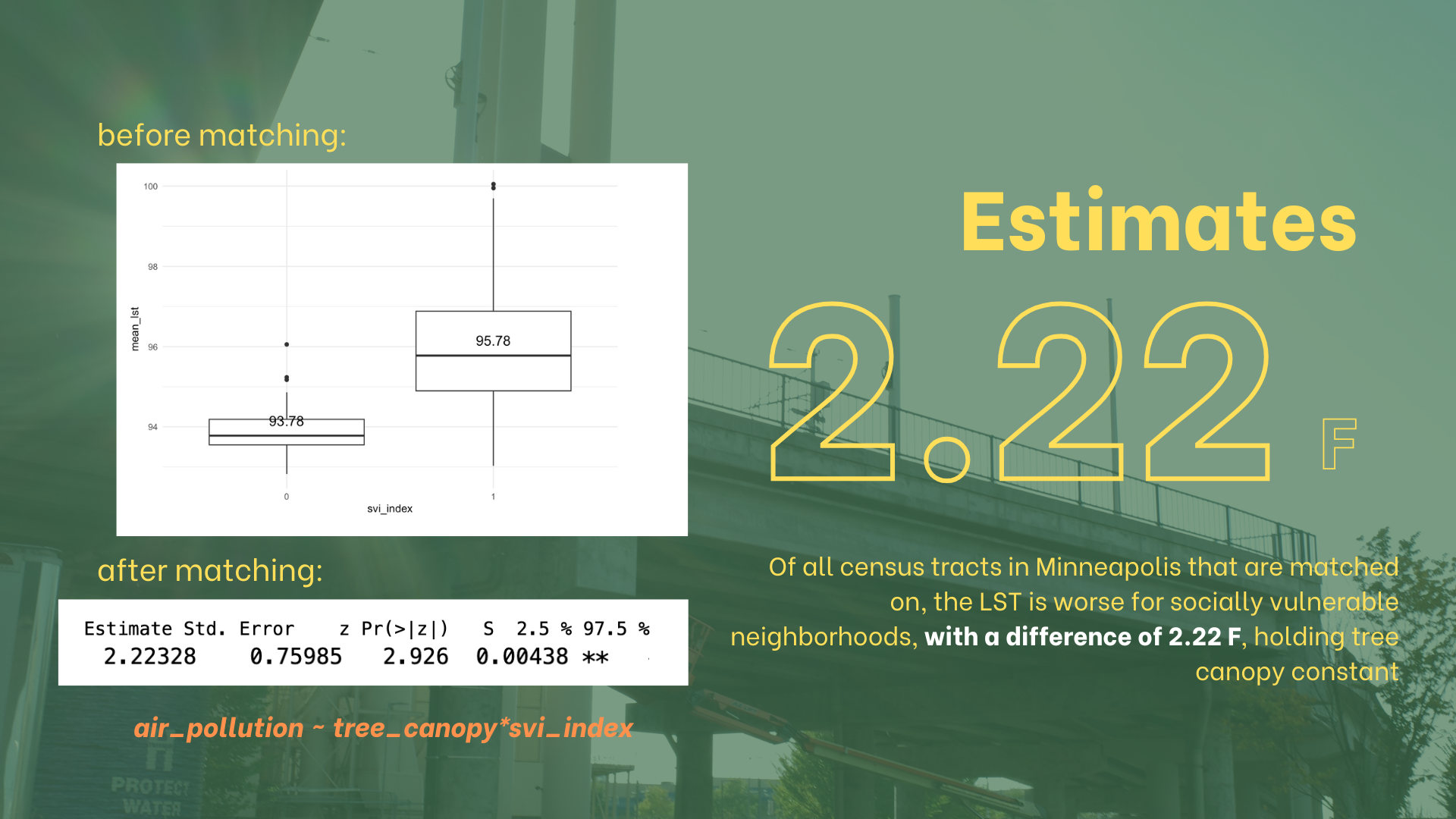
Social Vulnerability vs. Climate Change
From our findings, it was clear that socially vulnerable neighborhoods (high poverty levels and minority population) are more exposed to air pollution and higher temperatures.